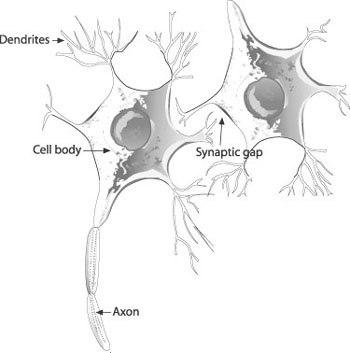Chapter 14. Neural Networks
Our brains are composed of billions of neurons, each one connected to thousands of other neurons to form a complex network of extraordinary processing power. Artificial neural networks, hereinafter referred to simply as neural networks or networks, attempt to mimic our brain’s processing capability, albeit on a far smaller scale.
Information, so to speak, is transmitted from one neuron to another via the axon and dendrites. The axon carries the voltage potential, or action potential, from an activated neuron to other connected neurons. The action potential is picked up from receptors in the dendrites. The synaptic gap is where chemical reactions take place, either to excite or inhibit the action potential input to the given neuron. Figure 14-1 illustrates a neuron.

Figure 14-1. Neuron
The adult human brain contains about 1011 neurons and each neuron receives synaptic input from about 104 other neurons. If the combined effect of all these inputs is of sufficient strength, the neuron will fire, transmitting its action potential to other neurons.
The artificial networks we use in games are quite simple by comparison. For many applications artificial neural networks are composed of only a handful, a dozen or so, neurons. This is far simpler than our brains. Some specific applications use networks composed of perhaps thousands of neurons, yet even these are simple ...
Get AI for Game Developers now with the O’Reilly learning platform.
O’Reilly members experience books, live events, courses curated by job role, and more from O’Reilly and nearly 200 top publishers.

